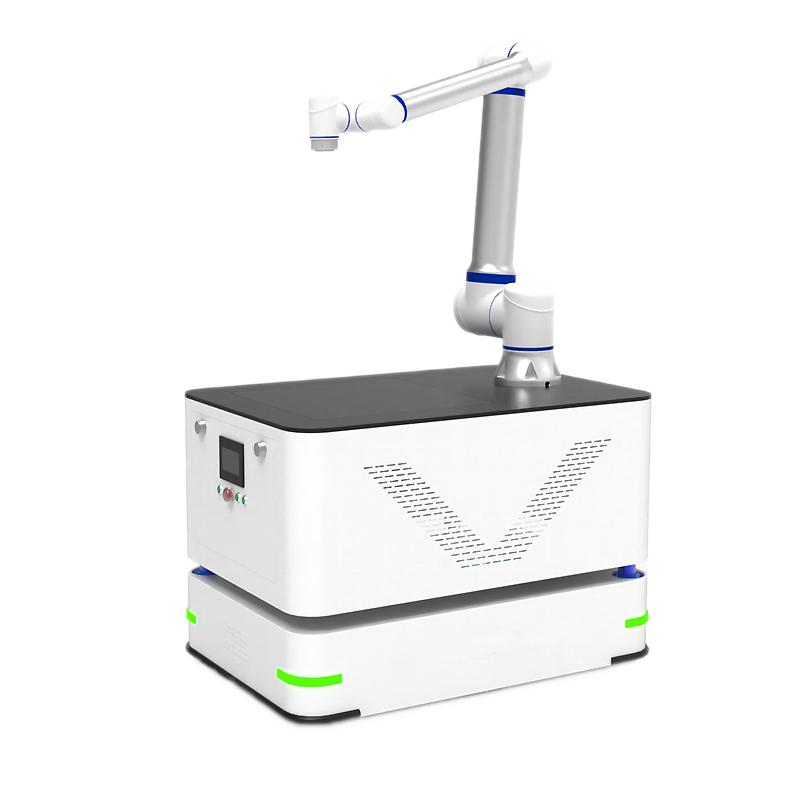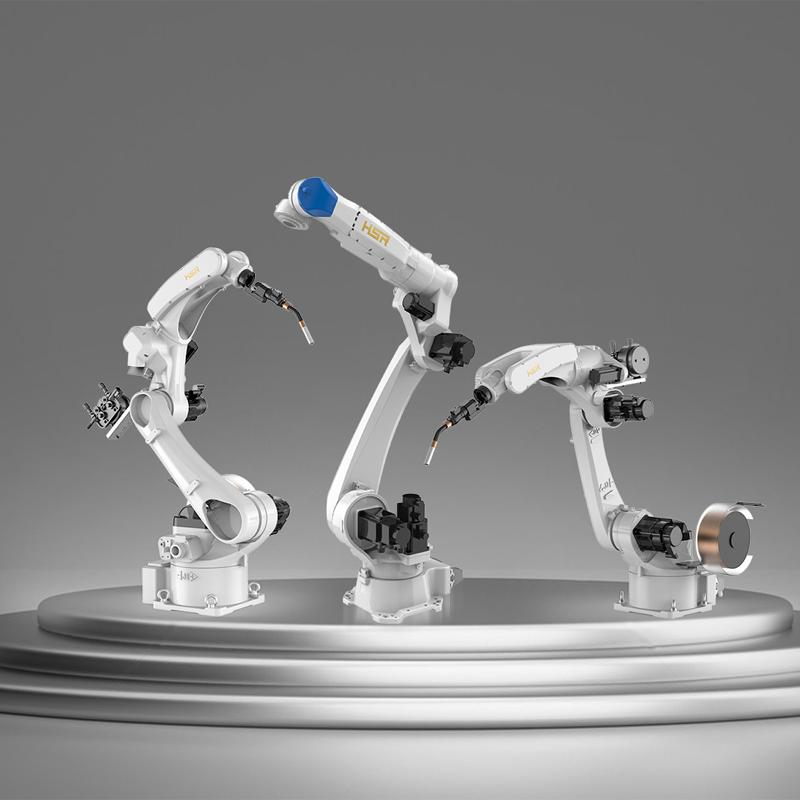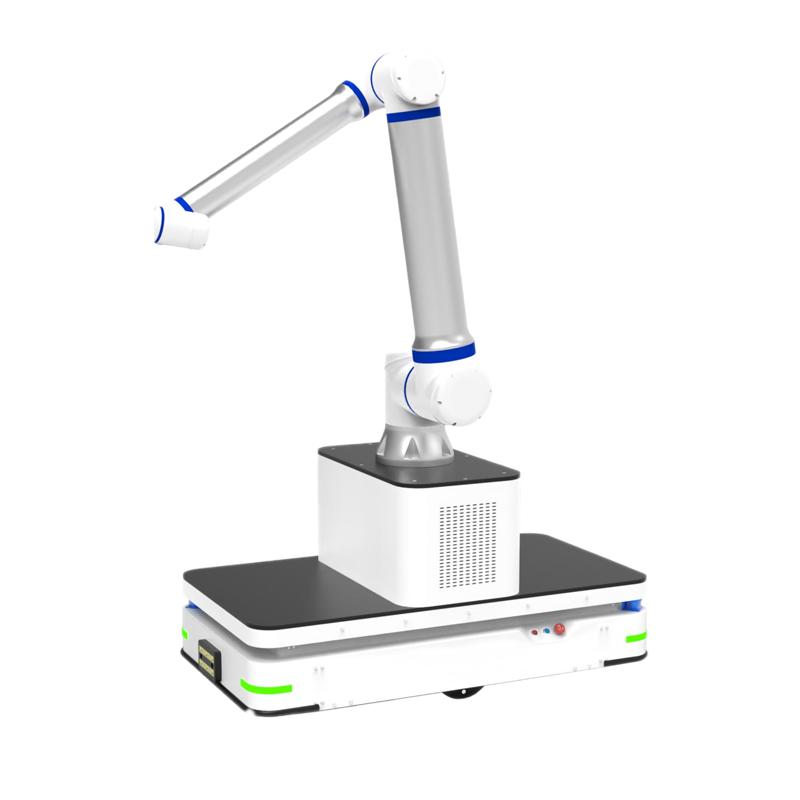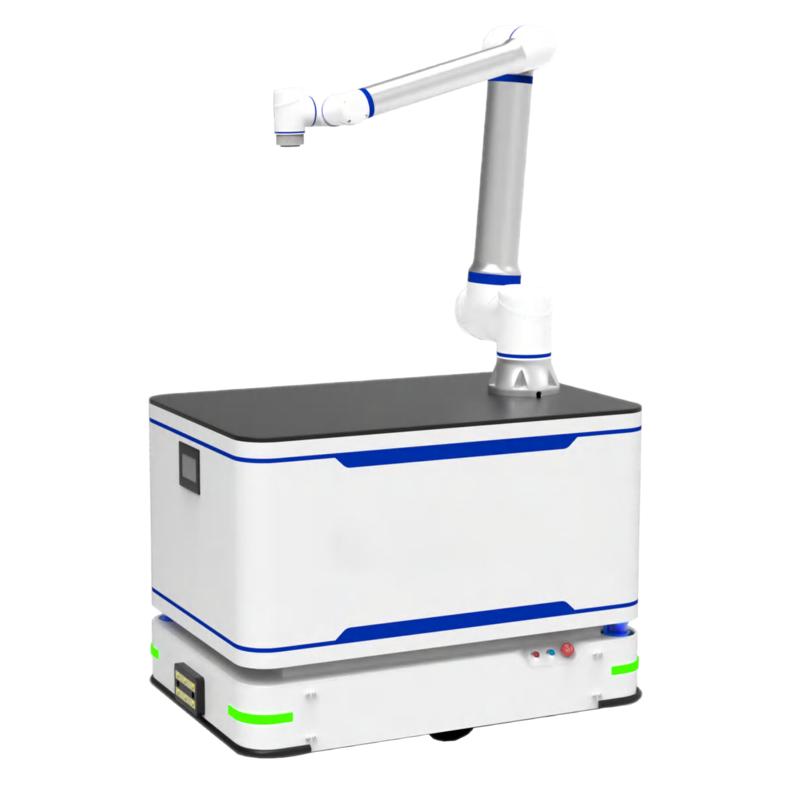I. The Importance of Robot Hardware Selection
Robots are now playing an increasingly important role in various fields, from industrial production to the service industry, from scientific research to daily life. To enable robots to operate efficiently and stably, hardware selection and configuration is the key first step. Appropriate hardware can ensure that robots accurately perform tasks, improve work efficiency, and reduce the probability of failures. For example, in industrial manufacturing, a poorly configured robot may frequently experience operational errors, affecting product quality and production progress. In medical service robots, unsuitable hardware may fail to accurately perform surgical assistance or patient care tasks, and could even endanger patient safety. Therefore, correct robot hardware selection and configuration is the foundation for robots to fulfill their intended functions.
II. Main Components of Robot Hardware
(A) Mechanical Structure
Body Frame
The robot's body frame is its fundamental supporting structure. Common materials include aluminum alloy and steel. Aluminum alloy frames are lightweight, facilitating robot movement and operation, making them suitable for robots with high weight requirements and frequent movement, such as logistics handling robots. Steel frames have high strength and can withstand large loads, commonly used in heavy-duty industrial robots, such as welding robots in automobile manufacturing workshops, which need to endure the weight of welding equipment and impact forces during welding over long periods.
When selecting a body frame, consider the robot's working environment and task requirements. If working in a space-limited and weight-sensitive environment, an aluminum alloy frame is more suitable; for scenarios with high load and complex working conditions, a steel frame is the better choice.
Joint Components
Joints are the key parts enabling robots to perform various movements. Common joint types include rotary joints and linear joints. Rotary joints allow the robot arm to rotate within a plane or in space, and their precision and torque output capability are important. For example, robots used in assembly work require high-precision control of joint angles to ensure accurate installation of components. Linear joints provide motion in a straight direction; for instance, the lifting joint of an industrial palletizing robot is a linear joint, which must stably carry cargo and accurately perform lifting and lowering operations.
When selecting joint components, focus on motion precision, load capacity, and durability. High-precision joints can make robot movements more accurate, improving work quality; joints with high load capacity can meet the needs of carrying heavier tools or objects; durable joints can ensure fewer failures during long-term use.
(B) Power System
Motors
Motors are the main source of power for robots. Common types include DC motors, AC motors, and stepper motors. DC motors have a simple structure and are easy to control, commonly used in small robots with moderate speed and torque requirements, such as educational robots. AC motors have higher power and efficiency, suitable for large robots in industrial production, providing continuous and stable power. Stepper motors are known for their high-precision position control capability, often used in applications requiring precise motion control, such as 3D printing robots, which can precisely control the print head's position to ensure high-quality printed models.
When selecting motors, determine the type based on the robot's speed, torque requirements, and control precision. Robots requiring fast movement may need higher-power motors; for tasks with extremely high position precision requirements, stepper motors or high-precision servo motors are better choices.
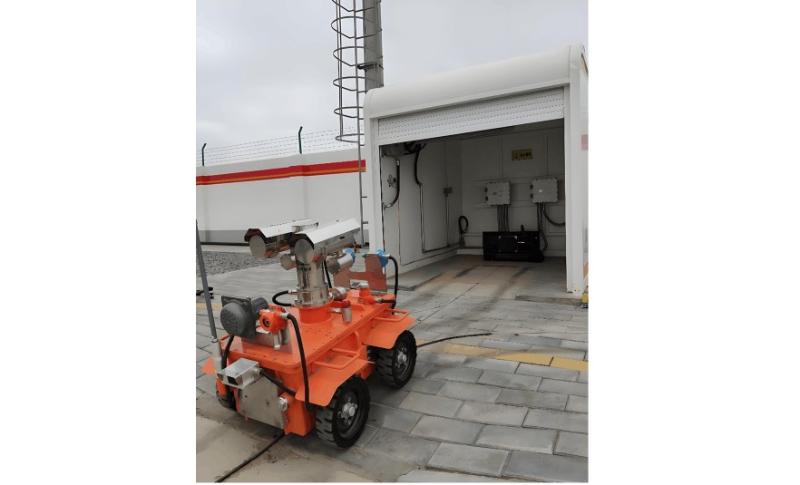
Battery or Power Supply
For mobile robots or robots requiring independent operation, batteries are an important power source. Common battery types include lithium batteries and lead-acid batteries. Lithium batteries have high energy density, are lightweight, and have low self-discharge rates, increasingly used in various portable and high-performance robots, such as drones and robotic vacuum cleaners. Lead-acid batteries have lower cost and better safety, but relatively lower energy density, commonly used in situations sensitive to weight and cost, such as simple industrial handling carts.
If the robot operates in a fixed location, it can obtain power through a power outlet. When selecting batteries or power supplies, consider the robot's operating duration, charging time, and ease of battery replacement. For robots requiring long continuous operation, select high-capacity, long-endurance batteries or a stable power supply system.
(C) Sensors
Vision Sensors
Vision sensors act as the robot's "eyes," enabling the robot to "see" its surroundings. Common vision sensors include cameras and LiDAR (Light Detection and Ranging). Cameras can capture image and video information, allowing robots to recognize object shapes, colors, and positions through image processing technology. For example, in intelligent security robots, cameras can monitor personnel and objects in surveillance areas in real time, identify abnormal behavior, and issue timely alarms. LiDAR measures the time of reflected light after emitting laser beams to obtain 3D environmental information, accurately mapping the robot's surroundings to help with better path planning and obstacle avoidance. In robotic vacuum cleaners, LiDAR can create room maps, enabling more efficient cleaning.
When selecting vision sensors, consider resolution, field of view, frame rate, and anti-interference capability. High-resolution sensors provide clearer image information, a large field of view allows the robot to monitor a larger area, a high frame rate ensures image real-time performance, and strong anti-interference capability ensures accurate operation in complex environments.
Force Sensors
Force sensors detect the magnitude and direction of force between the robot and the external environment. They are crucial in robot tasks requiring physical interaction with objects. For example, during precise assembly, force sensors can perceive minor changes in force during the assembly process, allowing the robot to adjust its movements to ensure correct component installation and avoid damage from excessive or insufficient force.
In industrial grinding robots, force sensors can monitor grinding force in real time, ensuring consistent grinding quality.When selecting force sensors, focus on measurement precision, range, and response speed. High-precision force sensors can more accurately detect force changes, the appropriate range should be determined based on the robot's task, and fast response speed enables the robot to react promptly to force changes.
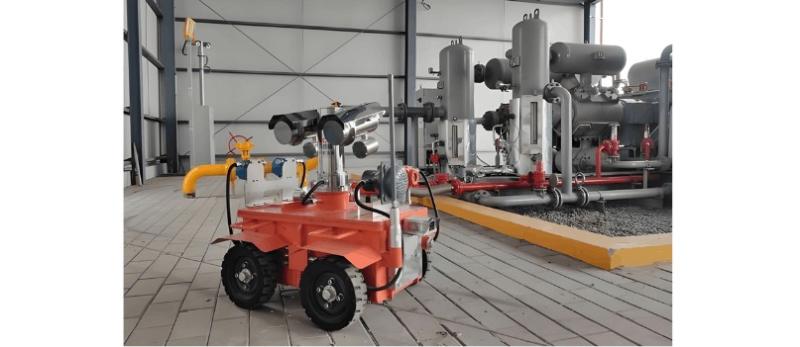
Distance Sensors
Distance sensors measure the distance between the robot and surrounding objects. Common types include ultrasonic sensors and infrared sensors. Ultrasonic sensors emit ultrasonic waves and measure the reflected waves to determine distance, suitable for short-range measurement with accuracy typically at the centimeter level, commonly used for obstacle avoidance in small robots, such as household robotic vacuums using ultrasonic sensors to detect distances to walls and furniture to avoid collisions.
Infrared sensors use infrared light to detect distance, with a relatively narrower detection range but fast response speed, commonly used in applications with high detection speed requirements, such as simple obstacle avoidance functions in toy robots.When selecting distance sensors, consider measurement range, accuracy, and adaptability to different environments. Different types of distance sensors may perform differently under various conditions; for example, infrared sensors may be interfered with in complex lighting environments, while ultrasonic sensors are relatively more stable.
III. Factors to Consider in Robot Hardware Selection
(A) Task Requirements
Precision Requirements
If the robot's task has extremely high precision requirements, such as lithography robots in chip manufacturing, then precision of various components must be a key focus during hardware selection. Motors need high-precision encoders to ensure movement accuracy, joint components must have minimal motion error, and sensors also need high-resolution and high-precision models.
For example, the resolution of its vision sensor may need to reach the micrometer level to accurately complete chip lithography tasks.For general assembly tasks with relatively lower precision requirements, hardware components with higher cost-effectiveness and moderate precision can be selected. However, ensure they meet basic precision standards to guarantee assembly quality.
Load Capacity
When a robot needs to carry heavy objects, load capacity is a key consideration. For example, a container handling robot at a port must carry containers weighing several tons, requiring the body frame, joint components, and power system to have sufficient load capacity.
Motors must provide enough torque to drive the robot to carry heavy loads, joints must withstand corresponding weight and stress, and the body frame must be robust and durable.If the robot only performs light operations, such as picking and placing small components on an electronics production line, the load capacity requirement is relatively low, allowing for lighter hardware configurations with smaller load capacity.
Speed Requirements
For robots needing to complete tasks quickly, such as parcel sorting robots, speed is an important indicator. This requires selecting motors with high rotational speed and fast response, as well as joints with fast motion and flexible movement. Simultaneously, the robot's control system must efficiently process data to ensure the robot operates at the set fast pace.
For robot tasks with lower speed requirements, such as agricultural harvesting robots working in relatively relaxed environments, hardware configurations with moderate speed but lower cost can be selected to balance performance and cost.
(B) Working Environment Factors
Temperature and Humidity
Robots working in high-temperature environments, such as high-temperature furnace inspection robots in metallurgical industries, require hardware with high-temperature resistance. Motor insulation materials must withstand high temperatures, electronic components must operate stably under high temperatures, and body frame materials may also need to be special high-strength, high-temperature-resistant alloys.
For robots working in humid environments, such as underwater exploration robots, consider the hardware's waterproof and moisture-proof performance. Circuit boards need special moisture-proof treatment, and motors and sensors must be well sealed to prevent water damage.
Dust and Corrosive Substances
In dusty environments, such as mine inspection robots underground, dust easily enters the robot's interior, affecting normal hardware operation. Therefore, the robot needs good dust-proof design, motors and sensors should have dust covers, and gaps in the body frame should be sealed.
If the working environment contains corrosive substances, such as robots in chemical production workshops, hardware materials must be corrosion-resistant. For example, the body frame can use stainless steel, and electronic components should undergo anti-corrosion treatment to extend the robot's service life.
Space Constraints
Robots working in limited spaces, such as home service robots operating in narrow indoor spaces, require compact dimensions. This requires selecting smaller motors, sensors, and control modules during hardware selection, while reasonably designing the body frame to allow flexible movement within limited space.
For large robots working in open spaces, although space constraints are relatively low, equipment layout rationality should still be considered for ease of installation, maintenance, and operation.
(C) Cost Factors
Hardware Procurement Cost
Different brands and models of robot hardware vary greatly in price. When selecting hardware, consider the budget comprehensively. For example, some imported high-precision robot components are expensive, while similar domestic products with performance meeting basic requirements are relatively cheaper. If the budget is limited, select cost-effective domestic hardware on the premise of ensuring basic task completion.
However, note that price should not be the sole criterion; excessively low prices may indicate insufficient hardware quality and performance, affecting the robot's long-term use and work effectiveness.
Operating Cost
Robot operating costs include power consumption and maintenance expenses. Some high-performance motors may have higher power consumption, while energy-saving motors can reduce operating costs. When selecting hardware, consider its energy consumption.
Maintenance costs cannot be ignored. For example, hardware designs that are easy to disassemble and replace components reduce repair difficulty and cost. Additionally, selecting reliable and durable hardware can reduce the frequency of failures, thus lowering maintenance costs.
IV. Process of Robot Hardware Selection
(A) Clarify Requirements
First, clearly understand what specific task the robot needs to perform. Is it welding or handling in industrial production, or cleaning and companionship in the service sector? After clarifying the task, determine the robot's requirements for precision, load capacity, speed, etc. For example, if it's a robot for electronic circuit board welding, it requires extremely high precision to accurately weld small electronic components onto the circuit board; if it's a cargo handling robot in a logistics warehouse, it requires larger load capacity and faster operating speed.
(B) Market Research
Conduct extensive research on robot hardware suppliers and products in the market. Understand the characteristics, performance parameters, prices, and user reviews of different brands and models. Relevant information can be obtained through internet searches, industry exhibitions, and consulting professionals. For example, search the official websites of robot hardware suppliers online to view product descriptions; attend robot industry exhibitions to experience different hardware products firsthand; consult enterprises that have already used robots to learn about their experiences and lessons in hardware selection.
(C) Develop Plans
Based on research results and clarified requirements, develop multiple hardware selection and configuration plans. In the plan, list in detail the brand, model, specifications, and estimated cost of each hardware component. Compare and analyze different plans, weigh their pros and cons. For example, Plan A may use imported high-precision motors but has a higher cost; Plan B uses domestically produced cost-effective motors, with slightly lower precision but meets basic task requirements at a lower cost. Through such comparisons, select the most suitable plan.
(D) Testing and Evaluation
Before actually purchasing hardware, conduct small-scale testing and evaluation. If conditions permit, build a simple test platform, install candidate hardware components, run some simulated tasks, and observe the robot's operation. Test whether indicators such as precision, stability, and reliability meet requirements. For example, for vision sensors, place objects of different shapes and colors on the test platform to detect whether the robot can accurately recognize and locate them; for joint components, observe whether there are issues such as jamming or jitter during movement. Based on the testing and evaluation results, further optimize and adjust the selection plan.
V. Conclusion
Robot hardware selection and configuration is a complex and critical process, directly affecting whether the robot can efficiently and stably complete work tasks. During the selection process, fully consider multiple aspects such as the robot's task requirements, working environment factors, and cost factors. Through processes of clarifying requirements, market research, developing plans, and testing evaluation, select the most suitable hardware configuration. Only in this way can high-performance, cost-effective robots be built, allowing them to maximize their value in various fields, continuously advance robot technology, and bring more convenience and innovation to people's production and daily life.
















